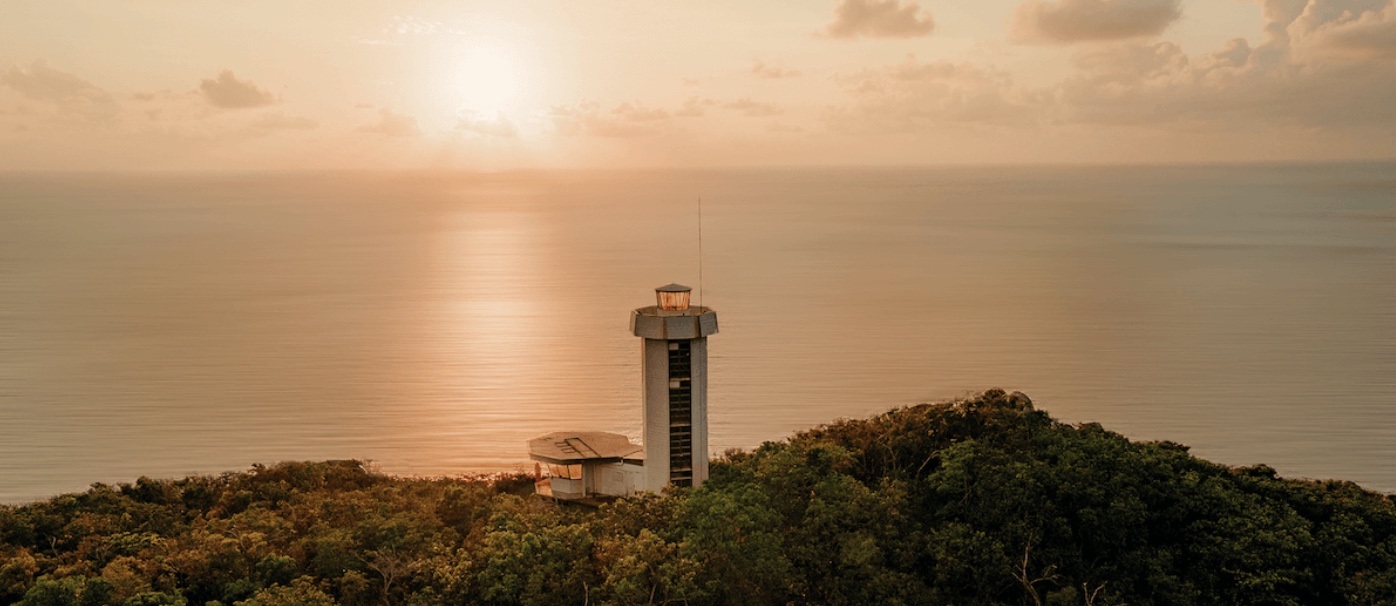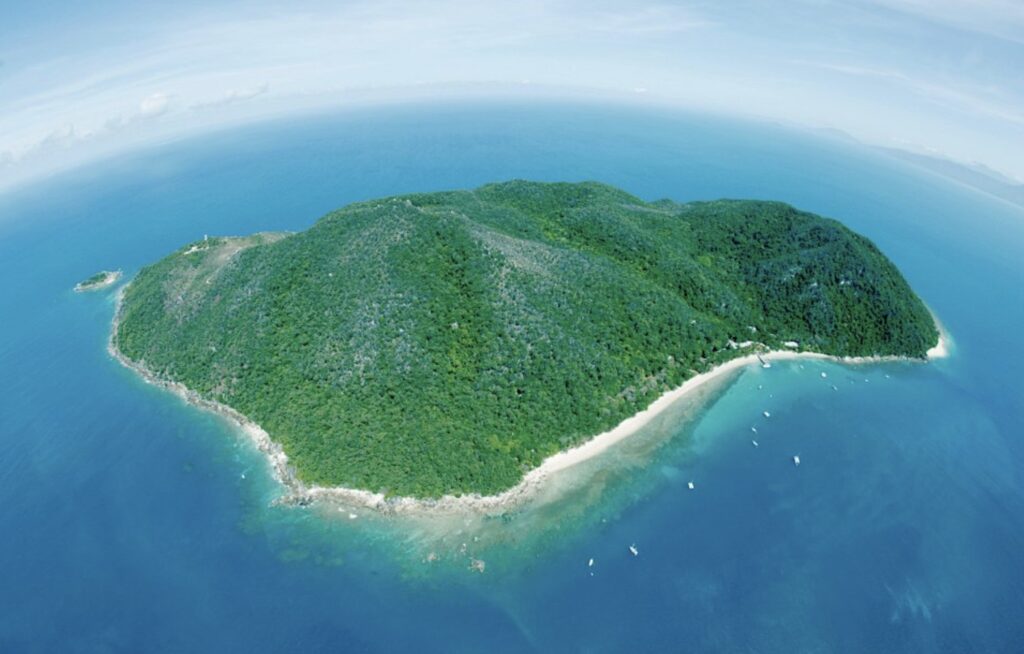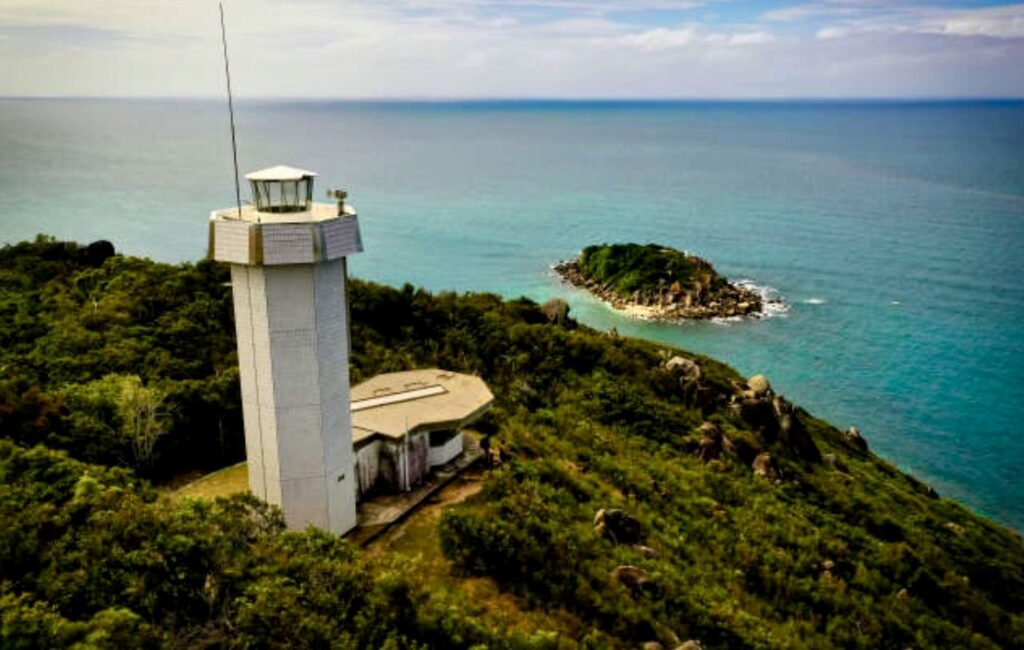
Location:
29km south east of Cairns, Far North Queensland
GPS: Lat: 16° 55.4’ S : Long: 146° 00.4’ E
First Lit: 1973 (Deactivated 1992)
Tower height: 56′ (17m). Focal height: 108′ (33m) msl
Original Lens: 3rd Order Chance Bros. Dioptric
Range: 17nml (31km)
Characteristic: One white flash every ten seconds: [Fl W 10s]
Note:
I was faced with a dilemma here because I’d originally planned to only visit active heritage listed lighthouses but of course rules are made to be broken in that some of the more interesting lighthouses are no longer in service, have been relocated or have been replaced by newer much less interesting structures that I chose not to visit. Such was the case with Fitzroy Island which I didn’t go to but have included because of it’s historic significance and a number of interesting characteristics, and might I add, it’s extraordinary ugliness, a testament to the brutalist style of the concrete obsessed 1970’s, surely the low point in contemporary architecture.
History:
Despite the fact that this lighthouse was deactivated in 1992 Fitzroy Island and Little Fitzroy have an interesting history in terms of assisting navigation through the Grafton Passage which is the gateway to the port of Cairns, and innovative, some would say regressive, lighthouse architecture and unique lighting characteristics.
The first light station in the area was established in 1929 on Little Fitzroy Island and in 1943 a second light station was built on the ridge above the old lighthouse keepers cottage Fitzroy Island. It’s interesting to note that during WW2 all lighthouses in norther Australia were turned off as a precaution against Japanese invasion and only activated once a ship had been identified as friendly.


This second building had a dual function, in addition to serving as a lighthouse it also had a radar facility monitoring the adjacent sea lanes and air space for any enemy activity. Another unique feature of this lighthouse was it’s very complicated characteristics. The light characteristic shown by the 1943 light was unique in Australia, and perhaps in the world, in that the characteristic seen (and not just the light colour) was dependent on the direction, corresponding to different Morse code signals. In the direction 217°, the middle of the channel, it showed a group of four flashes every 16 seconds. North of that direction, the first two flashes looked like a single long flash, resulting in one long flash followed by two short flashes, i.e. a Morse code “D” (go down). South of 217°, it would show two short flashes followed by a long flash, i.e. a Morse code “U” (go up). That was achieved by using two synchronised rotating bullseye lens panels, which had been taken from the first order lens formerly at Capr Northumberland Lighthouse.
The Lighthouse:
As a testament to the time it was built the lighthouse consists of a reinforced concrete octagonal tower topped with cantilevered lantern room and equally grotesque attached octagonal operations room. The whole structure was then clad in white ceramic tiles which was probably more aesthetic than raw concrete but also reads as a giant public convenience. Obviously the architect and powers that be had a #8 fetish at the time, or perhaps they were feng shui masters hoping to get rich?


the day has not aged well!

Little Fitzroy Island
Notable Keepers and Visitors:
Perhaps it was as a result of the aggressive architecture, or maybe it was the contrast in being stationed on a remote outpost so close to a thriving town but in the 49 years of operation Fitzroy Lighthosue had no fewer than 90 keepers, averaging just over six months per posting.